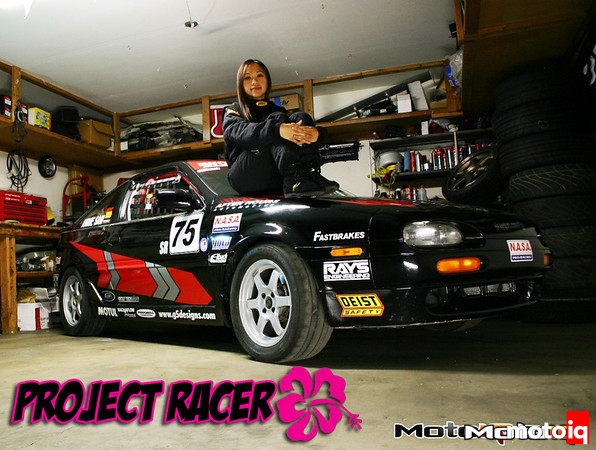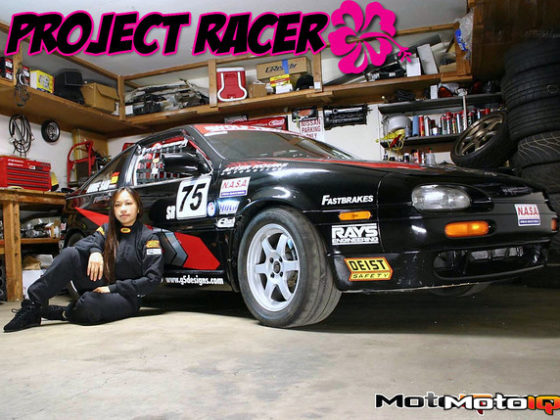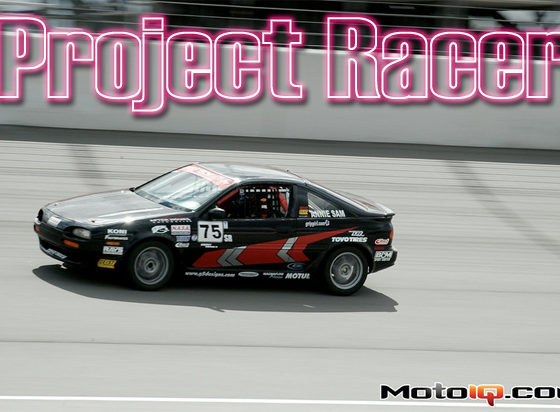,
 |
| Koyo’s racing radiator is not overkill on the hot running SR20DE engine. The Koyo unit is more than twice as thick as the stock Nissan part. |
Koyo Aluminum Racing Radiator
After installing a new engine, the first thing on the shopping list was a new radiator. The Koyo aluminum racing radiator is one of the best selling – if not the best selling aftermarket performance radiators out there. I heard good reviews on the radiator, and when I installed it, I was absolutely impressed. Unlike most other conventional aftermarket parts, the radiator bolted in as though it were OEM. Not really a surprise I suppose, since Koyo is a large manufacturer of OE radiators as well.
Made from aircraft quality aluminum and Heli-arc welded with an epoxy free core, all Koyo radiators are manufactured in Japan, then imported to the states. Koyo racing radiators are more than twice as thick as the stock SE-R radiators, at 53 mm, where your average B13 radiators are about 24 mm in width, and for the final bling factor, it didn’t hurt that the end tanks were polished to a mirror finish.
I’d regurgitate the claim from Koyo, which stated that, their racing radiators provided 20%-30% more cooling than standard radiators, but instead I’ll tell you about my own personal experience with these radiators a bit later; I really think that the overall amount of cooling improvement is actually much more than this.
 |
| Unorthodox pulleys slow down the water pump to the point where it will not cavitate. This is important for keeping the engine cool as the Nissan pump caviates at 6500 rpm. When the pump cavitates, the water flow drops to zero. |
Unorthodox Underdrive Pulleys
Next on the list were a new set of underdrive pulleys. Unorthodox has always been a friendly supporter of SE-R’s, so I opted for them. It didn’t hurt that their pulleys came in a choice of anodized red, blue, black, and natural polished aluminum. More bling factor.
The most important thing about the pulleys is that they greatly reduced water pump cavitation. Cava- what? Cavitation cav•i•ta•tion n. is localized boiling of the coolant caused by a low-pressure zone created in the vicinity of the pumps impeller (thank you, engineering dictionary). The SR’s not so efficient impeller design causes a lot of turbulence in the coolant. The turbulent areas have lower pressure which gets below the vapor pressure of the water-coolant mixture. The fluid flash boils and the pump impeller basically churns a bunch of bubbles. This causes water flow to the engine to stop.

Water pump cavitation is a severe problem with SR20 motors, so bad that the pulleys are necessary for extensive full throttle use. An SR20’s water pump starts to cavitate at 6500 rpm with the water flow dropping off to zero at 7100 rpm. Obviously, you can see how this results to inefficient cooling problems. How do the U/R pulleys solve this problem? By slowing the water pump impeller enough to where cavitation is eliminated and coolant flow is maintained, even at high rpm. This alone is enough reason as to why these pulleys should be mandatory for track use.
Another perk of these pulleys are that they also reduce rotating mass from the crank. Underdriving the accessories such as the power steering, alternator and water pump reduces frictional drag, increases the life of these parts at racing speed and frees up about 4 to 6 ponies at the wheels. They also weigh considerably less than the stock pulleys, a crucial detail when trying to build a competitive race car. Needless to say, I was very satisfied with this upgrade as well.




